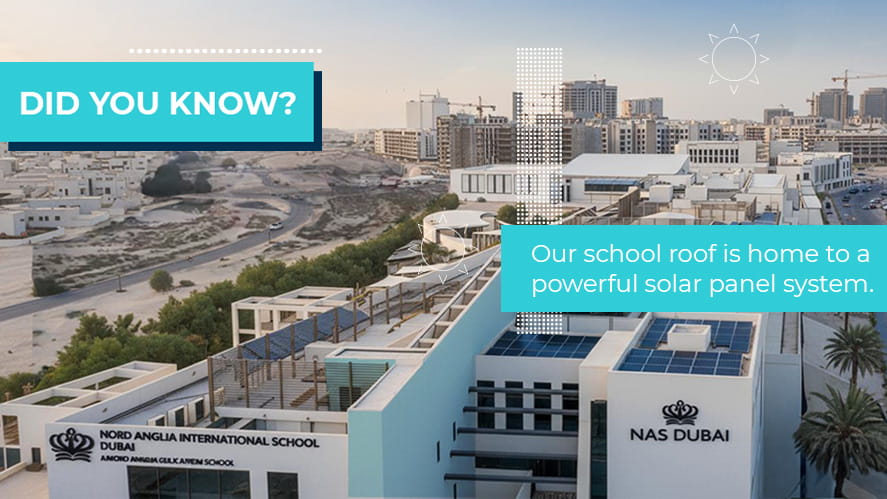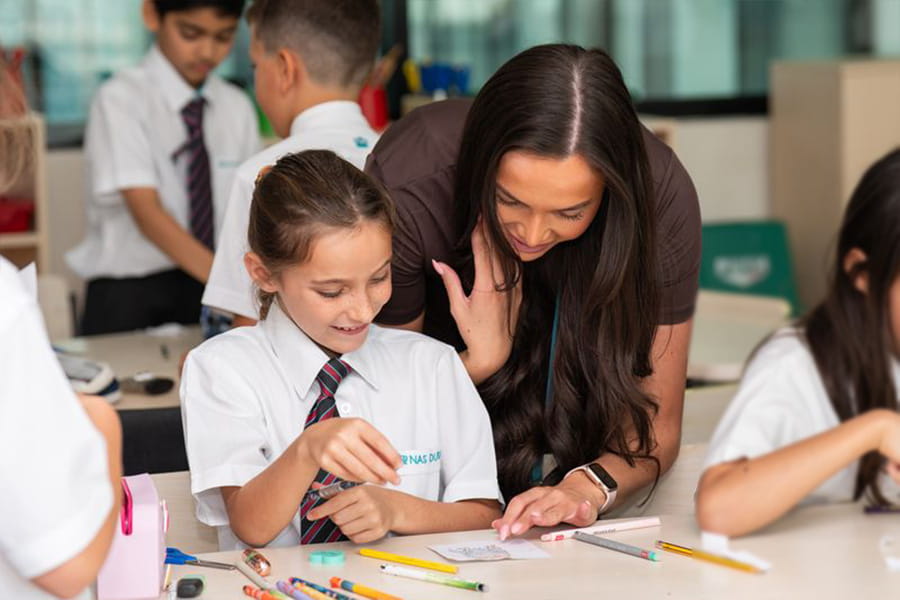High above the classrooms at NAS Dubai, 1,318 solar panels are quietly transforming the way we think about energy, learning, and sustainability. In a city known for its innovation and ambition, NAS Dubai is proud to be one of the UAE's premier green schools, generating clean, renewable energy directly from our rooftop. More than a sustainability project, our solar panel system serves as a living classroom, providing students with real-time access to statistics, environmental impact, and the power of renewable energy in action. As the UAE strives for Net Zero 2050, our school community is taking a hands-on approach, turning climate education into daily practice and sunlight into something special.
The System: How It Works
Installed across the school's rooftop, NAS Dubai's solar energy system is made up of 1,318 solar panels. Together, these panels generate enough electricity annually to power around 100 average homes. Over the next 25 years, the system is expected to generate enough clean energy to power a small town for the whole year, considerably reducing the school’s reliance on traditional energy sources.
This initiative represents a greater shift towards renewable energy in UAE schools, establishing NAS Dubai as a regional model for green schools.
Environmental Impact: A Measurable Difference
The switch to solar energy at NAS Dubai has real, long-term benefits for the environment. Estimated reduction in CO2 emissions over 25 years: 12,363 tonnes. This is equivalent to planting 206,000 trees and removing 2,700 cars from the road for a whole year.
This aligns with the UAE’s Net Zero 2050 strategy, which aims to dramatically cut carbon emissions and transition to more sustainable energy solutions across sectors, including education.
Learning Through Real-Time Data
Beyond reducing emissions, the system is a valuable teaching tool. The panels are connected to a real-time monitoring platform, which students and staff can access to see:
· Current energy production
· Total kilowatt hours (kWh) generated
· CO2 savings in real time
This data is used in DICE lessons, sustainability workshops, and classroom discussions, helping students better understand concepts such as energy efficiency, climate change, and carbon footprints.
This is a practical example of how solar power in schools can support interactive sustainability learning and make environmental education more tangible.
Sustainability in Education
At NAS Dubai, sustainability is not a standalone initiative; it is woven into the school’s ethos and curriculum. From eco clubs and student-led projects to infrastructure planning, students are encouraged to take ownership of environmental care.
By investing in clean energy and involving students in the process, NAS Dubai is helping develop the next generation of environmentally conscious leaders, equipped not only with knowledge but also with experience in taking action.
A Step Toward the UAE’s Clean Energy Vision
The UAE has made significant strides in renewable energy, including launching major solar initiatives like Noor Abu Dhabi and Mohammed bin Rashid Al Maktoum Solar Park.
Schools like NAS Dubai play a key role in contributing to this vision on a local scale by integrating green technologies and preparing students to think critically about the future of the planet.
NAS Dubai’s solar project demonstrates how schools can play a meaningful role in the global sustainability movement, not just by reducing emissions, but by educating students in real-world environmental solutions.




